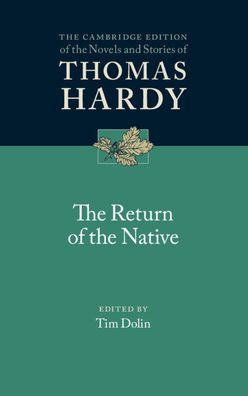This is the first complete scholarly edition of one of Hardy's greatest novels. The Return of the Native engages ambitiously with contemporary ideas and problems of existence, and would go on to become one of the major 'Wessex novels'. When composed in 1878, however, Hardy's Wessex did not yet exist, and this edition, which is based on meticulous analysis of Hardy's holograph manuscript and every significant print edition of the novel to appear in his lifetime, situates The Return of the Native within the historical context of its first publication, encouraging readers to trace its evolution over the following four decades. Tim Dolin provides a wealth of supporting materials, including an original, authoritative text, comprehensive annotation, commentary and glossary, and illustrated appendices of both Arthur Hopkins's illustrations and the topography of Egdon Heath, thus creating an invaluable tool for students and scholars of Hardy and nineteenth-century literature alike.


